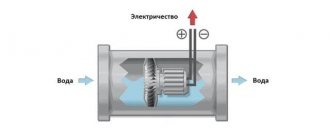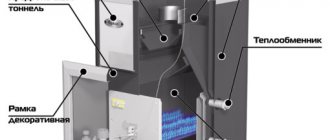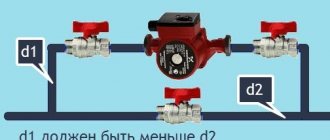Almost all modern models of gas stoves are equipped with electric ignition systems. These devices have become so widespread mainly due to the fact that they significantly simplify the ignition of gas. In order to understand what electric ignition of a gas stove is and how it can make a simple process even easier, all you need to know is: no matches or lighters - you just need to press a button to start a fire.
The presence of electric ignition greatly simplifies the use of a gas stove.
Types of electric ignition
Gas stoves are equipped with two types of electric ignition: mostly outdated mechanical or more modern automatic.
The two types of electric ignition differ in the type of control, which must be taken into account during installation.
To understand what mechanical electric ignition of a gas stove is, you need to know that this is a conventional concept that includes two types of design, fundamentally different in design, but having a common feature - for them to work, you need to press an additional button.
A sign of mechanical electric ignition is the presence of an additional button on the panel.
- The first type is impact piezo ignition. Its operating principle is based on the piezoelectric effect. Its essence lies in the fact that stress occurs in some materials under the influence of mechanical pressure. The piezo ignition circuit contains a powerful spring with a striker and a piezoelectric element. When you press the button, the spring is charged, the striker strikes the piezoelectric element, due to which a current in the form of a spark appears in the system and the gas is ignited. Such a system was installed on gas stoves in the last century; most manufacturers abandoned it, since it requires significant effort to compress the spring, although it does not depend on the power supply.
- The second scheme requires constant availability of electricity in the network. It contains a transformer for converting current and a capacitor for storing it. When you press the button, the capacitor begins to charge, and when it reaches peak values, the current is released in the form of a spark.
Automatic electric ignition is much easier to control; current is supplied immediately when the gas is turned on.
Automatic electric ignition of a gas stove is to some extent similar to the second type of mechanical, but it uses a more complex electrical circuit. In contrast, to get a spark you need to press the rotary knob responsible for supplying gas, and not an additional button.
Automatic electric ignition is suitable for each burner. In this case, the handle will have a corresponding icon in the form of fire or spark.
In this case, the circuit in which the spark plug is located is closed and many electrical impulses appear in the electrodes, repeating as long as the handle is pressed.
One of the shortcomings of such a scheme is that if the electric ignition breaks down, you will have to disassemble the entire surface.
The main advantage of automatic ignition over mechanical ignition is that to use it you do not need to press additional buttons; it is enough to apply a little force to press the burner handle.
Thus, electric ignition is an important element of any modern gas stove, which was created to simplify the use of equipment.
Ignition unit for a gas stove: types, design, repair
Modern gas stoves are equipped with an automatic ignition system. In accordance with the design features, the ignition unit for a gas stove starts either mechanically, through the user pressing a button on the front panel, or turns on automatically. As soon as gas begins to flow through the divider, the igniter produces a spark that ignites the gas fuel. The user can only independently set the size of the torch crown.
Functions and types of electric ignition
The circuits of modern ignition systems are different, but they have the same basis - the use of candles powered from a household electrical network of 220 V. When you turn the switch or press a button, the electrical circuit closes, the starting spark plug creates a spark on the burner with access to gas. Electric ignition is divided into automatic and mechanical, which is also called semi-automatic.
Operating principle of gas stove igniter:
- The pressed button creates a voltage that is applied to the capacitor area.
- The capacitor charge is turned on.
- The voltage level at the thyristor rises.
- The capacitor discharge process starts.
- The spark gap is activated, producing a spark that ignites the blue fuel.
What does the ignition unit for a gas stove look like?
In order for the process to be implemented, the stove must have a connection to the network, through a separate socket from the line with a three-core wire, a cross-section of at least 1.5 mm with grounding. In the electrical panel, a 16A circuit breaker is installed on this line.
Mechanical
To operate mechanical ignition, two types of transformers with 4 or 6 contacts are used. In the first case, a spark is struck only for the burners, in the second - additionally for the oven.
Scheme of operation of a mechanical gas ignition unit for a stove:
- They turn on the button on the front panel, powered by electricity.
- The process of charging the capacitor using rectified voltage starts.
- The accumulation of charges in farads begins, and the voltage of the main thyristor increases accordingly.
- When the peak voltage is reached, the capacitor begins to discharge with heating of the primary transformer winding, which provokes the operation of the spark gap, releasing a spark that ignites the gas in the open burner.
Mechanical ignition requires a piezoelectric element, which is why this type is often called piezo ignition. Today, such a stove with mechanics is difficult to find in the retail chain among new products from gas equipment manufacturers. The principle of mechanical control is already becoming obsolete, since it is not entirely convenient due to the fact that in order to connect the unit and ignite the gas stove, in addition to turning the gas supply regulator, you also need to simultaneously press the spark starter on the panel.
Auto
This kind of ignition differs from the mechanical physical process of producing a spark; it does not require an ignition button, and the gas is ignited simultaneously with turning the handle. This system is more complex, since both the supply of gas and the occurrence of a spark occur simultaneously. Moreover, the process of spark formation is repeated and carries out about 50 electrical pulses per minute, accompanied by clicks. This option is considered the most convenient; it is most often used in hobs and very rarely in ovens. The control mechanism can be seen if you remove the flame arrester from the burner; it is located approximately on the side in a small niche.
The main pros and cons of electric ignition stoves
The principle of operation of electric ignition is quite simple; even if it breaks down, this malfunction can be corrected.
Despite the apparent complexity, automatic fire ignition systems are now installed on most gas stoves, including because they are cheap to manufacture and install.
Electric ignition is available in all types of stoves: conventional and built-in.
With mass production, manufacturers incur almost no additional costs, which allows them to keep final product prices at the same level. In addition, electric ignition systems have many advantages over traditional gas ignition methods.
Any modern gas stove has these elements, which adds convenience.
The most obvious include the following:
- Convenience - the gas lights up with just one slight effort when turning the handle;
- safety – no need to put your hand close to the flaming gas at the risk of getting burns;
- economical - there is no need to endlessly replenish supplies of matches or buy new lighters to replace broken ones.
Since gas will be supplied regardless of the presence of electricity, you can start the stove using matches.
The only drawback of ignition systems for gas stoves, mostly conditional, is the dependence on power supply. From time to time, power outages may occur due to repairs or unforeseen disruptions. At such moments, electric ignition will be absolutely useless, so, just in case, you should keep matches or a lighter on hand.
Which electric ignition is better, mechanical or automatic?
Electric ignition is a convenient thing; it helps those who like to cook on a gas stove, but do not want to use matches. The device allows you to turn on the gas supply without effort. Many modern stoves are equipped with this function.
Mechanical electric ignition
The mechanism of action is as follows:
- The regulator turns (it turns on the gas supply).
- The start button is pressed.
- The gas-air mixture is ignited.
The inconvenience is that you need to work with both hands.
Advantages of mechanical electric ignition:
- There is no need to purchase matches in reserve.
- Ease of use.
- Protection from possible burns (if gas flares up).
- Quickly get used to controlling a gas stove.
Negative point - if the electrical power is turned off, the stove can only be lit with matches or a lighter . It is also important to be careful if there are small children. They can easily turn on a household appliance. Therefore, you need to use the stove in such a way that the baby does not understand the switching mechanism.
Reasons for ignition failure include:
- The button becomes dirty from drops of grease (this can lead to a short circuit)
- If dirt gets on the candle , this leads to its rapid heating or cooling, then the integrity of the ceramic shell is damaged;
- Unit transformer burnout (occurs due to operation for a long period of time)
- Broken contacts (this is the main reason for the circuit to malfunction)
- Carrying out wet cleaning.
How to understand that the ignition is broken:
- Pressing the button does not ignite the gas.
- Electrical discharges do not stop even after the button is released.
- The presence of clicks without the appearance of a spark.
- Triggering of the circuit breaker in the panel.
How to fix electric ignition yourself:
- You need to make sure that the burners themselves are working. To do this, the gas is ignited in them one by one (using an ordinary match).
- Carrying out a careful inspection of all elements responsible for ignition.
- Disconnecting the device from the electrical network.
- Cleaning candles from dirt. If water gets on the buttons during the process, you should wipe them with a cloth and then dry them with a hairdryer.
- If the contacts are burnt, they must be cleaned to a homogeneous metal (the procedure is carried out using fine-grained sandpaper.
It cannot be said that electric ignition is an essential function. But today all new models are produced with this function. It’s quite difficult to find a regular stove, and besides, its price is not that low.
Automatic electric ignition
Automatic electric ignition helps light the gas simply by turning the handle. There is no need to press additional buttons. The principle of operation is simple: first of all, you need to press the switch slightly and then turn it.
What happens at the moment of switching on: the circuit closes, then a spark is created between the electrodes. She is the one who lights the burner. The mechanism can be examined carefully if you remove the flame cutter cover from the burner.
The location of the electric ignition is in a small recess on the side.
The main advantage is the ability to work with one hand. In addition, the function allows you to light the flame in the burner quickly and safely. You just need to turn the lever. It is he who will supply the gas.
Similarities between devices
The similarities are given below:
- In order for any type of electric ignition to work, it is necessary to connect the stove to an electrical network.
- The need to install a grounded outlet.
- A stable voltage is required . If there are problems with voltage in the house, then it is better to purchase models that are most resistant to various surges. Domestic options are most adapted to such working conditions.
- The need to install separate wiring if there is no grounded outlet. In this case, a three-core wire is required, with a cross-section of at least 1.5 mm (in diameter). In addition, the electrical panel must be equipped with a 16A .
- Possibility of operating a gas stove without electricity . You just have to use matches or a lighter. Therefore, a power outage will not lead to starvation of the entire family.
- The need to replace the transformer in case of ignition failure.
- Composite electronic elements are sold in specialized stores.
- The most vulnerable parts are brass contacts ; they fail after a while.
- Possibility of independent connection of the stove.
Device differences
The differences are presented in the table.
| A gas stove is a hob and an oven in a single housing. The main element of any gas stove is the gas burner - a device in which air and combustible gas are mixed. Ignition of the mixture occurs at its exit from the burner (originally this term meant a cast-iron disk covering the hole in a solid fuel stove). Therefore, make sure that the flame does not protrude beyond the edge to avoid damaging the material. There are many tiles that can travel with you. They work with gasoline, diesel or spirit. These fuels have the disadvantage that they are less energy efficient. Gas is a fuel that is quickly used and can apply high temperatures.
The control knobs are located on the front or (less often) top panel of the stove. The number of burners can vary from two (tabletop and portable stoves, for example, models PNS-2 and PNS-2D100 from GEFEST) to six (models A2, A3 from SMEG). The top part of the stove with the burners is called the hob. Below it is an oven equipped with its own gas burner or electric heater. Gas power. After all, as practice shows, very often you need to not just “cook food,” but do it over “high” or “small” heat, for example, quickly boil a kettle or slightly heat a tiny portion of baby porridge. Other options for completing hob configurations are less common. If you're looking for an alternative to a gas stove, you'll come across several devices to consider. Below are some models that you can use instead of a gas stove. The gasoline stove can be used individually even at sub-zero temperatures. Gasoline can be purchased anywhere because you can get it at a gas station. However, you should be aware that gasoline from the gas station is very contaminated and can clog the burner nozzles. For this reason, a lighter liquid is more suitable for this reason. Even at low temperatures that are below zero, you can use the stove. One of the disadvantages of a gasoline stove is that it is very heavy. In addition, maintenance and cleaning are often more difficult. However, more benefits can be seen, such as easy fuel delivery or use in low temperatures. For example, models with two standard burners and two high-power burners (KM 417 from MIELE & Cie) or with five burners (C 659 BX from ARISTON, HM 19550EU from SIEMENS). Multi-circuit burners. Many manufacturers are not limited to burners with a power of 1-3.5 kW. Relatively recently, double-circuit gas burners have appeared in the world of gas stoves (the HM 19550EU model from SIEMENS, built-in hobs KM 406 from MIELE & Cie, SRV576X from SMEG are equipped with them) and even three-circuit burners (in models EC 7968 W from GORENJE, PCL 785 DEU from BOSCH, CP 647 GT from ARISTON). For these models, fuel is available worldwide. Multi-fuel stoves are a further development of gasoline stoves. They are very popular because fuel is available everywhere. It can be used at low temperatures and is capable of burning gasoline, diesel, gas or kerosene. Gasoline has the highest calorific value. The disadvantage is that commissioning is very labor intensive. With a specially designed slab pump, negative pressure is created.
If you want to use this model, you need to become familiar with the processing. In such burners, you can get not one flame contour (that’s what a ring of flames is called), but two or three, located one inside the other. Thanks to this, more intense heating is produced not along the periphery of the burner, as usual, but over its entire area. All circuits are controlled using one knob. Multi-circuit burners have a very wide range of power output. For example, in the HM 19550EU model the maximum power of the Wok burner is 5.75 kW, which allows you to prepare dishes in a matter of minutes. The minimum switching power (gas is supplied only to the internal circuit) is only 180 W. This is ideal, for example, for making coffee and similar “delicate” operations. If the furnace is not operating correctly, it must be considered to have severe sooting. For this reason, you should always carry sufficient material to maintain and clean the stove. In addition, seals must be replaced at regular intervals. These models are available for 100 euros. The alcohol stove is easy to use. It works, as the name suggests, with alcohol and is often used in an open kitchen. It is ideal for any purpose. Alcohol is available everywhere, so there are no bottlenecks. However, the spiritual oven will not be very hot, so you need to be patient when heating. If alcohol is not available, you can also run the stove with a high percentage of alcohol. Electric ignition system.
The electric ignition system consists of a spark plug built into the burner. Electric ignition can be manual or automatic. Electric ignition is manual. If you use the stove in cold areas, it may take longer to heat up. With the acquisition, as well as with the following expenses, the spiritual furnace is very favorable. In addition to the type of installation required, choose one or another option, which depends on preferences and tastes. We tell you the advantages and disadvantages of each. Both types have 2 or 4 fires of different sizes to contain different types of containers and a stove, which may or may not be in the same unit. Gas: uses injectors that transfer fuel to the burners; The gas in the oven can be packaged or plugged into the mains. In the first case, after turning the burner power switch, you need to press the ignition button, as, for example, in the “Darina 1401-04” (“GAZMASH”) model. With the manual type of electric ignition, the ignition voltage is supplied to all candles at the same time, so it is impossible to mix up the burners. | ||
| Criterion | Mechanical view | Automatic view |
| Additional button | Necessary, it is the additional button that is responsible for supplying the spark. | Need not. The method of supplying a spark is by turning the power regulator. |
| System complexity | A simpler system | More complex system |
| What a spark | One-time | Repeated (about 50 electrical impulses per minute). |
| Where is it most common? | In gas stoves, ovens | In hobs |
| Save time | Quite a long process | Significantly saves time |
Why is electric ignition needed?
Housewives note the convenience of this small detail, since a spark for arson is always at hand.
Auto-ignition, first of all, was developed in order to significantly simplify the ignition of fire and, at the same time, increase the safety of gas stoves. In addition, such a system significantly speeds up the ignition process itself, which, together with other advantages of electric ignition, is especially important for people who spend a lot of time at the stove.
In addition to convenience, there is no risk of getting burned, as is the case with using matches.
What to choose: mechanical or automatic electric ignition?
The difference between the two types of electric ignition lies only in the need to press an additional button, which is usually placed on a common control panel.
If we approach this issue from the point of view of ease of use, then automatic electric ignition, as a more progressive mechanism, is much more practical. To turn it on, no additional buttons are needed; just press the handle a little when applying gas.
Despite the fact that electric ignition is powered by electricity, energy costs will be minimal.
The only thing that can be attributed to the disadvantages of automatic ignition is that when using it, the stove begins to click unpleasantly due to repeated electrical impulses, but this can hardly be called a real problem.
When automatic electric ignition occurs, there is a corresponding clicking sound. They irritate some people, but it's everyone's business.
What conditions are necessary for the operation of such equipment?
You can buy such a lighter if your electricity goes out. Its advantage over matches is its long spout, which protects your hands from burns.
All that an electric ignition system requires is a constant power supply, and the less often voltage drops occur in the network, the longer such a mechanism will last.
Important! When choosing a gas stove with electric ignition, you should pay attention to the properties of the transformer installed inside, and especially its resistance to sudden voltage surges.
Will a stove with electric ignition work in the absence of electricity?
You can safely continue to use a gas stove during a power outage, as long as you have matches or a lighter in the house.
The presence of electricity only affects the auto-ignition mechanism. The stove itself will work as usual without power supply, but to light a fire you will have to use traditional methods - matches or a lighter.
Among the shortcomings of electric ignition, it can be noted that if a little water gets in, it will not work until it dries completely.
Requirements for a stove with electric ignition
A stove with electric ignition must be connected to the network. And for this you need a grounded outlet. If it is not nearby, separate wiring is done. In this case, the wire must be three-core and with a cross-section of at least 1.5 mm in diameter. In parallel, the electrical panel must be equipped with a 16A protection element. It can be an RCD or differential, or a regular machine. As for the cord itself, it is usually included with gas stoves with electric ignition by default. If it is missing, it is made independently, using a three-core wire of suitable cross-section and a plug with grounding contacts. But you can buy it.
Have you been wanting to buy a new gas stove for a long time, but don’t want to bother with matches or a lighter every time? Or are you tired of fighting with smokers who are trying to steal the treasured box of matches intended for the gas stove? Apparently, this is why the developers of gas stoves invented electric ignition of a gas stove, which will forever save you from unnecessary hassle when cooking.
Why doesn't the electric ignition work and what should I do?
It is worth noting that electric ignition often causes problems, so it is worth studying the causes of the breakdown.
Before drawing any conclusions about possible malfunctions, it is necessary to accurately determine their presence. There are some signs, based on which you can not only confidently say about the occurrence of breakdowns, but also determine their possible causes. The following factors indicate the presence of malfunctions in the operation of the electric ignition system.
To easily fix the problem, you need to find out the cause of the problem.
- Absence of any reaction to pressing the ignition button or the burner knob. This means a click, or multiple clicks in the case of auto-ignition. The first thing to do if the electric ignition for a gas stove does not produce a spark is to check whether other electrical appliances are working. It may turn out that the reason is the lack of voltage in the network. If everything is in order with the power supply, then the problem may be a violation of the integrity of the circuit, due to which the current does not reach the electrodes responsible for causing the spark. The most vulnerable part of the electric ignition system is its activation button, since if it is used frequently, contact with the rest of the circuit may be disrupted.
- Lack of a spark powerful enough to ignite a fire. In this case, pressing a button or knob may be accompanied by regular clicks. This may happen due to any contaminants or moisture getting into the system, then it is enough to simply clean and dry its elements. In addition, the transformer may break, causing it to not generate a high enough voltage.
- The auto ignition continues to generate sparks after the burner knob is released. This happens if the electrical circuit somehow closes bypassing the key installed in the handle.
- Spontaneous generation of sparks without activation of the ignition system. As in the previous case, the problem most likely lies in an unwanted short circuit.
In some cases, you can fix the problem yourself, however, most often you have to call a specialist.
If the stove does not light with electric ignition, the most reasonable solution is to call a professional electrician or, if possible, return the stove to a service center under warranty.
When purchasing kitchen appliances, be sure to keep the warranty. In the event of a breakdown, repairs can be carried out free of charge.
Of course, if you have some knowledge in the field of electrical engineering and skills in repairing electrical circuits, you can fix the auto-ignition yourself. Its operation is based on a not too complicated circuit; an experienced person, if desired, will not have any difficulty understanding it and repairing the device.
If the problem occurs after washing the stove, then you need to let the water dry out.
Electric ignition systems are reliable devices that significantly simplify interaction with the stove. And if you consider that the price for the opportunity to almost completely forget about matches is just a constant connection to the electrical network, then it is quite obvious why most modern gas stoves are equipped with such systems.
Electric ignition is a minor element that simplifies the cooking process. At the same time, it is easy to fix its malfunction.
Electric ignition, mechanical or automatic, which is better? – Handyman's Handbook
Modern models of gas stoves are equipped with an automatic ignition device.
Depending on the design features, it is turned on by pressing the corresponding button on the control panel or triggered when gas is supplied. This feature eliminates the need for the user to keep matches or a lighter at hand and reduces the risk of getting burned from direct contact with fire. If the ignition on your gas stove does not work, you should take steps to restore it.
After reading this article, you will get an idea of the operating principle of such units and will be able to take the correct actions in the event of a breakdown.
What is electric ignition
What is mechanical electric ignition? To ignite the gas-air mixture at the outlet of the burner, a local source of high temperature is required that exceeds the auto-ignition point of the hydrocarbon gas.
In this capacity, it is convenient to use an electric arc that occurs during a high-voltage breakdown. After the gas jet ignites, the temperature regime stabilizes, and the need for an additional source of energy disappears.
Therefore, the high-voltage discharge occurs within a few moments.
Simplified, the principle of operation of such a device can be described as follows:
- when the circuit is closed, voltage is applied to the capacitor, which begins to charge to a certain level;
- after the necessary energy has been accumulated, a control signal is sent to the thyristor, which directs the current to the discharge device;
- it initiates a sharp voltage surge on a special electrode, accompanied by an arc discharge in the immediate vicinity of the burner, after which the gas ignites. The principle of operation of electric ignition
Need to know! A short spark breakthrough time is enough to start the combustion process, while energy consumption remains minimal.
Types of electric ignition
It is customary to distinguish between two types of electric ignition for a household gas stove:
- mechanical;
- automatic. Burner with electric ignition
Their difference lies in the degree of human participation in choosing the timing of the circuit closure. In the first case, there is a separate button that must be pressed at the appropriate moment. In the second option, a signal is given when the gas flow control knob is turned. It is convenient, completely safe and does not require special attention from the user, since all the work is done by the ignition unit.
Main features of electric ignition stoves
Electrically ignited stoves have minimal external differences from other units. These include:
- electric ignition button for a household gas stove on the front panel;
- white ceramic candles built into each burner;
- power cable 1.5-2 meters long with a plug at the end, coming out of the back wall of the device. Ignition button
The main elements of the electrical circuit are located in the internal cavities of the stove body and remain invisible to an outside observer.
Requirements for a stove with electric ignition
Unlike a conventional gas stove, a device with electric ignition must be connected to an AC electrical network of 220 volts.
To do this, it has a three-core cable with a cross-section of at least 1.5 mm, ending with a grounding plug. An outlet with a grounding circuit is equipped near the installation site. A regular automatic machine must be mounted on the entrance panel.
As an additional safety feature, you can install an RCD that blocks the network in the event of a leakage current.
Design of a high-voltage unitImportant! The installation of the electrical network should only be carried out by a specialist.
Ignition on gas stove does not work
Like any other technical device, electric ignition can fail after some time.
In order to independently determine the malfunction and correctly present the problem to a specialist, you should learn a very small amount of useful information.
But after a simple diagnosis, you will know for sure that it is the mechanical electric ignition of the gas stove that has broken down, and in simple cases, you can fix the defect yourself.
Symptoms of a problem
The main symptoms of breakdown of elements of the electric ignition system:
- the gas does not ignite when the corresponding button is pressed;
- electrical discharges continue continuously even when the button or handle is released;
- clicks are heard without sparking;
- the circuit breaker is triggered in the panel. The main signs of ignition failure
Causes of failure
Common reasons for refusal are:
- grease and other liquids getting on buttons and other parts of the system, which causes a short circuit;
- contamination of the candle, causing its uneven heating or sudden cooling with subsequent cracking of the ceramic shell;
- due to mechanical defects or as a result of long-term operation, the transformer of the ignition unit burned out;
- oxidation of the contacts has occurred, preventing the normal closure of the circuit. Breakage may occur during wet cleaning
How to fix electric ignition yourself: tips
If the electric ignition on your gas stove is not working properly, there is no need to immediately call a repair service. Try to figure out the problem yourself.
First, you should make sure that the burners themselves are working properly by lighting the gas in them one by one with a regular match. Then it is necessary to determine whether the entire system is faulty or only its local part, responsible for a specific burner.
Be sure to carefully inspect all ignition elements.
Sometimes you can restore functionality yourself if you have accurately determined the cause of the failure and are able to eliminate it. To carry out repairs safely, the device must be disconnected from the network by unplugging the plug from the socket.
Checking the spark generation unit
If dirt is found on the candles, they are thoroughly cleaned. If water gets on the ignition buttons, it is recommended to wipe the damp area with a cloth and dry it with a household hairdryer. When the contacts are oxidized or burnt, they are cleaned to a homogeneous metal.
Advice! Cleaning any metal parts is easy using fine-grained sandpaper.
When to contact a specialist
Not every user has the skills of a mechanic or electrician.
If you could not even determine the cause of the breakdown and do not have special knowledge, entrust the process of diagnosis and subsequent repair to a professional technician.
An experienced specialist will not only quickly find the source of the malfunction and perform all mechanical work, but will also select the correct spare part if replacement is necessary.
A professional will definitely find the cause of the breakdown and fix it. Tested! Reputable repair organizations are responsible for the results of repairs and do not lead to repeated calls with the same problem.
The most common faults are spark plugs operating in high temperature zones and ignition units. Knowing the brand of the stove, the repairman called to your home will most likely take the necessary spare parts with him.
The services of a repairman for a gas stove with automatic ignition will not be cheap, but to guarantee quality, safety and eliminate the risk of additional costs associated with unqualified intervention by an amateur, you will have to use them. This is especially true when working with the internal structure of the device.
Conclusion
Gas stoves equipped with an ignition system are slightly more expensive than conventional models and, due to the presence of additional equipment, break down more often than others.
Source: https://reminform.com/elektropodzhig-mehanicheskiy-ili-avtomaticheskiy-chto-luchshe/











